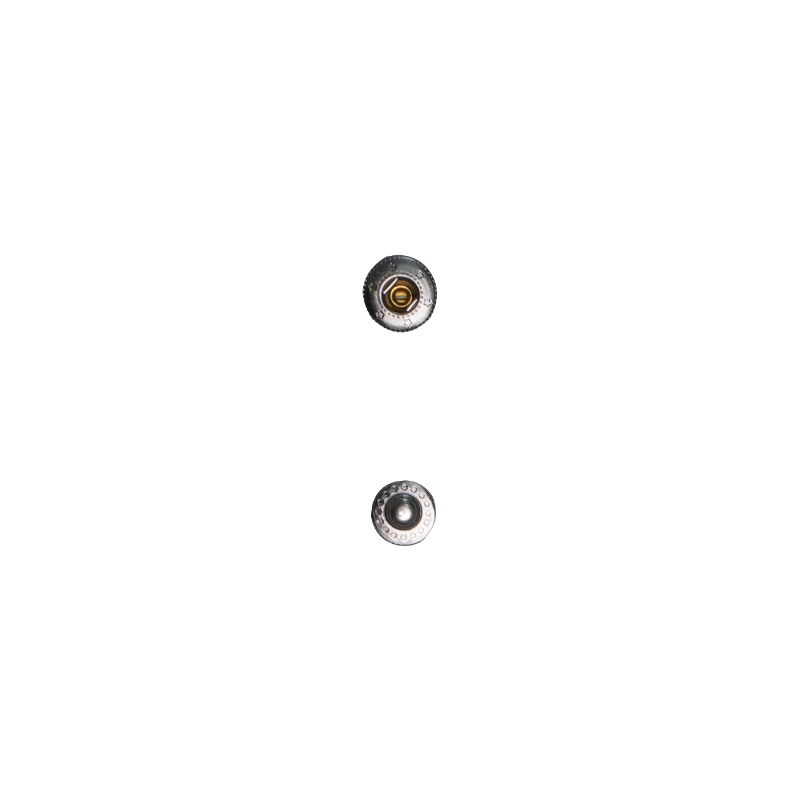Metal buttons perform well in terms of corrosion and rust resistance, design versatility, and surface treatment due to the following factors:
Metal buttons are designed to withstand corrosion and rust based on the materials used and surface treatments applied. Here’s how they perform:
Stainless steel buttons are highly resistant to rust due to the chromium content (typically at least 10.5%), which forms a passive layer of chromium oxide on the surface. This layer prevents moisture and oxygen from penetrating and causing rust.
Stainless steel buttons are ideal for use in humid environments or for outdoor applications where exposure to water is common.
Brass Buttons:
Brass, an alloy of copper and zinc, is naturally resistant to corrosion. It doesn’t rust like iron-based metals but develops a patina over time that enhances its appearance and protects it from further corrosion.
Brass buttons are often used in fashion and military uniforms due to their aesthetic appeal and longevity.
Aluminum buttons naturally form a thin layer of aluminum oxide, which protects them from corrosion. This lightweight material performs well in both everyday and harsh environments like marine settings.
Nickel or Zinc-Plated Buttons:
These buttons are often plated with a thin layer of nickel or zinc through electroplating, which significantly enhances their resistance to rust. The plating acts as a barrier, preventing moisture and air from reaching the base metal.
Galvanized Steel Buttons:
Steel buttons are sometimes coated with zinc in a process called galvanization, which provides them with high resistance to rust. Galvanized buttons are typically used in industrial or outdoor applications where they are exposed to moisture.
Metal buttons offer a wide range of design options, making them versatile for various applications:
Metal buttons can be manufactured in various shapes, sizes, and styles, from classic round or square buttons to more complex custom designs with engravings or logos. This versatility makes them suitable for fashion, uniforms, and even upholstery.

Different finishes can be applied to metal buttons to achieve aesthetic goals, such as antique, matte, polished, or brushed finishes. Each finish offers a unique look, making metal buttons adaptable to different design requirements.
Metal buttons can be engraved or embossed with logos, text, or decorative designs, adding a layer of personalization. These designs can remain clear and distinct because metal surfaces hold fine details well.
Metal buttons can be combined with other materials like leather, wood, or fabric inserts to enhance both aesthetic appeal and functionality. This allows for greater design flexibility in fashion and accessories.
Surface treatments play a significant role in improving the performance, durability, and appearance of metal buttons:
Electroplating is one of the most common surface treatments used to coat metal buttons with a layer of protective metal like zinc, nickel, or chromium. This treatment enhances rust resistance and can also give buttons a shiny or decorative appearance.
Anodizing aluminum buttons creates a thick, durable oxide layer on the surface, making the button even more resistant to wear and corrosion. This also allows for the addition of various colors without sacrificing durability.
Powder coating involves applying a protective dry powder layer that is baked onto the button’s surface. This provides a thick, hard layer that enhances both corrosion resistance and scratch resistance.
Passivation (for Stainless Steel):
Passivation is a chemical treatment that removes free iron from the surface of stainless steel, increasing its corrosion resistance. This process strengthens the naturally occurring oxide layer on the steel.
Polishing and Buffing:
Polishing and buffing treatments improve the smoothness and shine of metal buttons while reducing surface imperfections where moisture and contaminants could gather. This not only enhances aesthetics but also increases corrosion resistance.
Applying a clear lacquer or varnish provides an additional protective layer, shielding the button from environmental exposure. It can also add a glossy or matte finish, depending on the design requirements.
Surface treatments like electroplating, anodizing, powder coating, and passivation improve both the aesthetic quality and performance of metal buttons by increasing their resistance to corrosion, wear, and fading.
Metal buttons excel in both functionality and design due to their inherent material properties and the range of surface treatments available.

 en
en  русский
русский 한국어
한국어 get a free quote
get a free quote
















